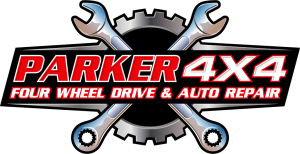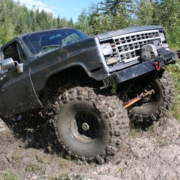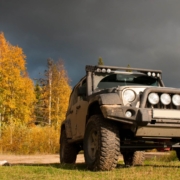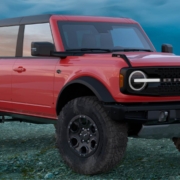Top Trails for 4×4 Adventures Near Denver
As the thrill of off-roading beckons, Denver’s backyard emerges as a playground for 4×4 enthusiasts. In this guide, we’ll explore the top trails near Denver, suitable for all skill levels. But before we dive into the heart-pounding excitement of these routes, remember the golden rule of off-roading: your vehicle’s readiness is as crucial as your adventurous spirit. Ensure your 4×4 is trail-ready with timely servicing at Parker 4×4 – your partner in adventure.
Trail 1: Red Cone – Webster Pass
Difficulty: Hard
Miles from Denver: 60
Red Cone – Webster Pass is not for the faint-hearted. With its steep inclines and narrow paths, this trail will test the capabilities of both driver and machine. The adrenaline-pumping ascent to the Red Cone peak offers breathtaking views of the alpine wilderness. This trail is open seasonally, so checking conditions before heading out is crucial.
Trail 2: Argentine Pass
Difficulty: Moderate
Miles from Denver: 50
The Argentine Pass, sitting at an elevation of 13,207 feet, is a testament to Colorado’s stunning geography. Suitable for intermediate drivers, this trail weaves through historic mining sites and dense forests, eventually leading you to one of Colorado’s highest drivable passes. The journey, rich in both history and scenic beauty, is an off-roader’s delight.
Trail 3: Bill Moore Lake
Difficulty: Easy to Moderate
Miles from Denver: 40
Perfect for beginners or those looking for a more relaxed experience, Bill Moore Lake offers a delightful mix of scenic beauty and manageable challenges. The trail showcases wildflower meadows, dense forests, and the serene Bill Moore Lake, making it a picturesque day trip for off-roading families.
Trail 4: Georgia Pass
Difficulty: Moderate
Miles from Denver: 65
Nestled between Breckenridge and Jefferson, Georgia Pass presents a delightful blend of history and natural splendor. The trail, once a route for gold seekers, now serves as an off-roading treasure with its mix of rocky paths and smooth stretches. The panoramic views from the top are well worth the journey.
Trail 5: Mount Antero
Difficulty: Hard
Miles from Denver: 120
Mount Antero is a gem for seasoned off-roaders. Known for its gemstone deposits, this trail offers more than just a rugged path – it’s an adventure into the heart of Colorado’s mineral belt. The trail’s rocky terrain demands skill, making it an exhilarating challenge for experienced drivers.
Trail 6: Twin Cone
Difficulty: Moderate to Hard
Miles from Denver: 55
The Twin Cone trail, true to its name, offers a twin challenge of rough terrains and high altitudes. As you ascend, the changing landscapes from forested paths to alpine meadows create a mesmerizing backdrop. Reaching the summit rewards you with a view of the sprawling Kenosha Pass.
Safety and Preparation
Safety on these trails is paramount. Always check weather and trail conditions before departing. Carry essential supplies, including water, food, a first-aid kit, and recovery gear. Additionally, ensure your 4×4 is in top condition. This is where Parker 4×4 comes in.
Parker 4×4: Your Gateway to a Safe Adventure
At Parker 4×4, we understand the allure of the wild, and more importantly, the need for a reliable vehicle to get you there and back. Our experienced technicians are passionate off-roaders themselves, offering services from routine maintenance to specialized modifications tailored for the rugged Colorado trails.
Custom Services for Trail Readiness
- Suspension Tuning: Essential for those rough terrains.
- Tire Checks and Replacements: To grip the ever-changing landscapes.
- Engine Performance Checks: To ensure your vehicle can handle high altitudes.
- Safety Inspections: Because nothing matters more than your safety.
Before you take on the Colorado trails, bring your 4×4 to Parker 4×4. We’ll make sure it’s not just ready for the adventure but also safe for you and your companions.
Conclusion
Exploring the mountains and trails near Denver is more than a hobby; it’s a journey into the heart of what makes Colorado unique. With trails varying from beginner-friendly to expert-only, there’s an adventure waiting for every off-roading enthusiast. And as you prepare to tackle these rugged paths, remember that a well-maintained vehicle is your best companion. Stop by Parker 4×4, where our team is ready to ensure your 4×4 is as adventure-ready as you are. Book your service today and embrace the spirit of off-roading with confidence and safety.
Ready for your next off-road adventure? Ensure your 4×4 is trail-ready with Parker 4×4. Contact us today to schedule your service or to talk about custom modifications that can take your off-roading experience to new heights. Adventure awaits, and with Parker 4×4, you’re always prepared.



